This is an AGFA Billy-Clack No. 74 folding camera built in Germany from 1934 – 1940. It makes eight 6cm x 9cm exposures on a roll of AGFA B2 or 120 roll film. There was also a Billy-Clack No. 51 that took 6cm x 4.5cm exposures. The Billy-Clack was a basic 6×9 folding camera and was a direct competitor to the Kodak Jiffy series. Both the Jiffy and Billy Clack had single speed shutters with simple lenses and limited apertures. Each camera had dual brilliant viewfinders on the side of the shutter mechanism which was similar in design to box cameras. As a matter of fact, the Billy-Clack could be seen as a hybrid box/folding camera. The name “Clack” comes from Rietzschel who was another German camera maker that was acquired by AGFA’s parent company and then later merged in with AGFA in 1925. AGFA would continue to use the Clack name on it’s lower end models through the 1950s and 60s.
Film Type: 120 roll film (eight 6cm x 9cm exposures)
Lens: unknown focal length, but probably around 75mm f/11 uncoated Bilinar 2-elements
Focus: Fixed Focus (~7 ft to Infinity)
Shutter: Single Speed Metal Blade
Speeds: Bulb and ~1/50 only
Exposure Meter: None
Battery: None
Manual (in German): https://www.flickr.com/photos/73753553@N06/8030968642/in/photostream/
History
![datasheet_2153_datasheet_image1[1]](https://mikeeckman.com/wp-content/uploads/2016/04/datasheet_2153_datasheet_image11.gif) AGFA is a German acronym for Aktien-Gesellschaft für Anilin-Fabrikation and was founded in Berlin in 1867. The company’s first products were chemicals used in photography. AGFA first patented Rodinal in 1891, which is an agent used when developing black and white film, and is still in production today. Over the course of the next century, AGFA’s biggest competitor would be the Eastman Kodak company because both companies were in the market of making both film and cameras. The rivalry between the two companies would be fierce, as both would release competing formats and cameras nearly simultaneously.
AGFA is a German acronym for Aktien-Gesellschaft für Anilin-Fabrikation and was founded in Berlin in 1867. The company’s first products were chemicals used in photography. AGFA first patented Rodinal in 1891, which is an agent used when developing black and white film, and is still in production today. Over the course of the next century, AGFA’s biggest competitor would be the Eastman Kodak company because both companies were in the market of making both film and cameras. The rivalry between the two companies would be fierce, as both would release competing formats and cameras nearly simultaneously.
In their earlier years, the company expanded into making a variety of photographic products in the early 20th century. In 1925, AGFA acquired the German camera company Rietzschel, and their first product, the AGFA Standard was released a year later. By 1927, the name Rietzschel disappeared from all marketing and products, and in 1928 AGFA partnered with the American company ANSCO to manufacture it’s products for the American market.
Like Kodak, many of AGFA’s earliest products were basic box cameras which sold for very little. The idea was that if they could get people to buy their cameras, the company would continue to receive profits from sale of AGFA film. This concept worked well and made AGFA one of the most successful camera companies in pre-WWII Germany.
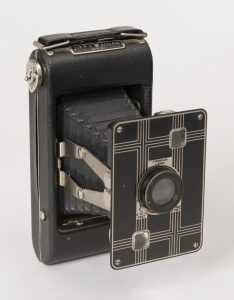
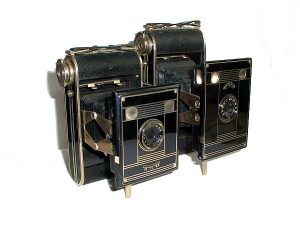
In 1933, Kodak would release the Jiffy Six-16 and Six-20 models which were basic folding cameras that took 6×9 or 6.5×11 exposures on Kodak’s own 620 and 616 formats. The camera was aimed at the entry level photographer who wanted an easy to use camera that was still capable of large exposures, but didn’t have a need for multiple shutter speeds or flexible aperture sizes. As was typical whenever Kodak would release a model to the market, AGFA would follow a year later with the Billy-Clack. Two different Billy-Clacks were made, a No. 51 and a No. 74 that were basically the same camera other than the negative size. The No. 51 was a “half frame” camera making 6×4.5 exposures, while the No. 74 shot 6×9 exposures.
Both cameras had a dual element lens and a single speed shutter with Bulb and Instant modes that shot somewhere around 1/50th of a second. The aperture was selectable between 3 different sizes from f/11, f/16, and f/22 (the No. 51 had aperture sizes of f/8.8, f/11, and f/16). The Billy-Clack did not have a traditional iris for changing aperture, instead there was a solid metal plate with 3 different sized holes which represented the three different apertures. By moving a sliding pin on the front of the camera, this metal plate would move, putting the chosen hole size in front of the shutter.
Interestingly, both Billy-Clack models had an internally selectable filter that would swing in front of the shutter when activated. On the No. 74 this was a yellow filter, supposedly for B&W photography, and in my research I read that the No. 51’s filter was for portraits. I am not sure if it was a closeup filter or a haze filter as I have not personally seen a Billy-Clack No. 51.

While this was a low spec camera, the dual element lens and single speed shutter were capable of respectable images that offered a pretty good bang for the buck for those wanting to shoot 6×9 negatives without spending a lot of money. The simple design of the Billy-Clack means there is little to go wrong over 80+ years. Assuming the camera is not physically damaged, and the bellows are still light tight, most Billy-Clacks can be brought back into usable condition today with just a few minutes of basic cleaning.
Today, there isn’t a huge market for the Billy-Clack, but since film is still readily available for them and they have that unique 1930s “art-deco” design, they are fun little cameras that can be acquired for very little money.
My Thoughts
I picked up this Billy-Clack in a “box o’ junk” from a local estate sale. I was targeting a couple of other much more desirable cameras in the lot and took this as a cheap curiosity. I put it on a shelf and forgot about it while I focused my attention on more illustrious models. After reading a bit about them online, I took my Billy-Clack out and to my delight, everything appeared to be working well.
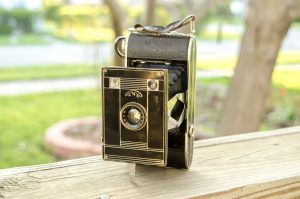
The camera was certainly dirty, but cleaning this camera is incredibly simple. The entire shutter and front lens mechanism is held together by the front plate which is held on by 4 screws. Remove the 4 screws and the front lens element and both brilliant viewfinders become easy to clean. Be careful when removing this plate as the glass lenses for each viewfinder and the lens itself will be loose and may fall out. I used a couple of Q-tips and some rubbing alcohol and wiped off 80 years worth of debris. To my delight, not only was the lens in excellent shape, but both mirrors in each viewfinder were in excellent shape and showed no signs of desilvering which often plagues old camera mirrors.
When I first took this camera out, I didn’t really know what to expect. I’ve witnessed capable results from single element meniscus lenses like in the Argus Seventy-Five and other respectable results from basic triplet lenses. This being my only 2-element lens, I expected something a bit nicer than the Argus, but perhaps a little soft around the edges.
It required all of 5 minutes to clean up this camera and get it into working condition and once I did that, I loaded in a roll of expired Kodak Portra 800 and took it with me on a trip to Mackinaw City, Michigan. I would later question my decision to load 800 speed film into a camera with a single 1/50 speed shutter. My thoughts at the time were that since the Portra was expired, it would shoot more like a 200 or 400 speed film. The time of year I went to Michigan was still very dreary and cloudy so I assumed that I would be shooting this camera in full shade on heavily overcast days. On the day I went shooting, Murphy’s Law kicked into full effect and it turned out to be a cloud-free bright and sunny day.
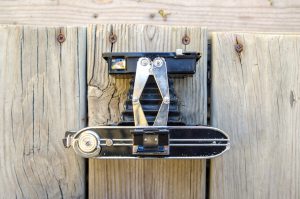
There is a small button on the top plate of the camera that is used to open the camera. The Billy-Clack has a unique hinged dual strut system that erects the camera with a bit of force. Unlike other antique folding cameras, you do not need to help this camera extend to it’s fully open position. It is almost alarming at how quickly the camera pops open. The Kodak Jiffy that this camera closely resembles uses a very similar hinged dual strut system, but I find it curious that no other camera of the era used this same design despite it working so well.
Using the Billy-Clack is very much like using a box camera from the early 20th century. It has fixed focus which means everything from approximately 7 ft to infinity will always be in focus. There is only one shutter speed, so assuming you are shooting appropriately slow film like ASA 50 or 100, you should be good to use Sunny 16 outdoors, and you have one of 3 aperture sizes to choose from.
The single speed and limited apertures mean that this is an outdoor, or very well lit indoor camera only. There is no way to use a flash with this camera, and unless you mount it to a tripod and use Bulb mode, you will most likely get very underexposed inside or full shade shots.
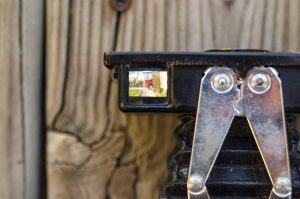
I found that the flip up viewfinder was rather awkward to use. I could never find a position for my eye where I could see through both loops to frame my shot, so I ended up using one of the two brilliant reflex finders on the camera. There is one for portrait and one for landscape orientations which is another way where the Billy-Clack is like a box camera.
If I had one complaint about the camera is that the shutter release is a bit awkward to use, especially in landscape mode. It is very small and tucks into the body of the camera really well, making it a bit difficult to locate while framing your shots. It was a bit easier to use in portrait mode as it is easily triggered by your right thumb if you are holding it like a waist level camera.
My Results
Whenever you shoot old cameras for the first time, there is a huge margin of error. For one, these things can be quite old. How well can a precision piece of technology really be expected to perform over half a century after it was made? How has it been treated in the decades before it arrived in my possession? Do I even know how to use it properly?
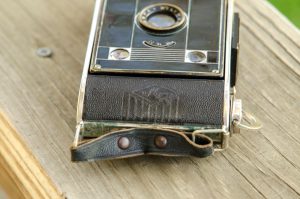
For anyone who shares my interest in this hobby, we all know that feeling of disappointment when a roll of film you had high hopes for turns out to have nothing but blurry, improperly exposed photos with light leaks or any other number of disappointing attributes that essentially ruin the image. It doesn’t matter whether you’re using a high spec Nikon SLR with a reputable lens, or a low end box camera, we all know the risk when shooting with these cameras.
So, what kind of expectations should I have for a camera that I wasn’t even looking for? This AGFA Billy-Clack was a low end camera even by the standards of 80 years ago. You cannot adjust the focus. It has only one shutter speed. Its largest aperture is f/11. I haven’t found any information about how much this thing cost when it was new, but it couldn’t have been high. The only reason I have this camera is because it came in a box with other, more illustrious cameras like a Yashica D and a Canonet QL17 GIII.
To be honest with you, I don’t even know why I loaded film into it in the first place. My backlog of cameras I want to try out for a future review was pretty long when I loaded in a roll of Kodak Portra 800 and went to visit my in-laws. I fired off several shots at Mackinaw City and hoped for the best.
My jaw dropped when I saw these pictures. I actually had to double check the label on the disc I received from Dwayne’s Photo to make sure this was actually from the right camera. If I hadn’t shot these pictures myself, I would have never imagined that such quality was possible from a 2 element, single speed, fixed focus camera. If you are reading this article saying “no way”, I don’t blame you. I probably wouldn’t believe it either.
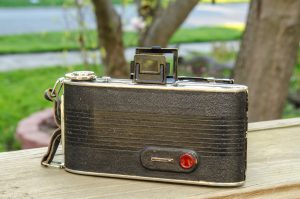
The color reproduction of the Porta 800 is impossibly good. Amazingly, the 800 speed film was not an issue at all with the single speed shutter. The images are not overexposed which is amazing considering that I shot all of these but the church photo on a very bright day. The church photo was taken off a balcony with the camera sitting on a table in Bulb mode. I estimate a full second exposure time. There is no noticeable chromatic aberration, even at the edges. There’s no significant vignetting. At worst, the corner sharpness is ever so slightly softer than the center, but that’s going to be true of almost any lens!
About the only thing worth mentioning is that the Portra 800 did give off a slightly bluish color cast in the outdoor scenes. I didn’t check this before loading the film, but I believe the Porta was Tungsten color balanced. All of the images above except the church scene did require a bit of color balancing in Photoshop, but otherwise, these are the unaltered scans straight from the lab.
So, there you have it. Sometimes you get cameras that disappoint you, sometimes it’s due to technical problems, or user problems. Sometimes you get photos that are about what you’d expect, but then on occasion you get a truly wonderful surprise. A camera that no one would have had any expectations about. I wonder in the whole world, how many people are actively shooting with an AGFA Billy-Clack from 1934? Of the 15 rolls I got back today, this was the one that surprised me the most. I absolutely cannot wait to take out this camera again and see if I can come close to reproducing these results on another roll.
My Final WordHow these ratings work |
I cannot say enough about how impressed I was with this camera. The 2 element lens is capable of beautiful images that don’t suffer the typical imperfections common with much more impressive specs. This is a fun and easy to use camera that surprised me more than any other camera in my collection. There is so little to go wrong on a Billy-Clack that I predict that almost any out there are still usable. At the very least, it takes all of 5 minutes to completely clean this camera. If you find one of these for sale, it will probably be for pennies, but it is worth so much more than that. Give the AGFA Billy-Clack a try, it’s a winner! | ||||||
| Images | Handling | Features | Viewfinder | Feel & Beauty | History | Age | |
| 2 | 1 | 0 | 1 | 1 | 0 | 40% | |
| Bonus | +1 for incredible images that exceed any expectations | ||||||
| Final Score | 8.0 | ||||||
Additional Resources
http://camera-wiki.org/wiki/Agfa_Billy-Clack
http://camerapedia.wikia.com/wiki/Agfa_Billy-Clack
http://www.collection-appareils.fr/x/html/page_standard.php?id_appareil=11984
http://photo.net/classic-cameras-forum/00RUoj
http://www.rolandandcaroline.co.uk/agfabilly/billyclack.html

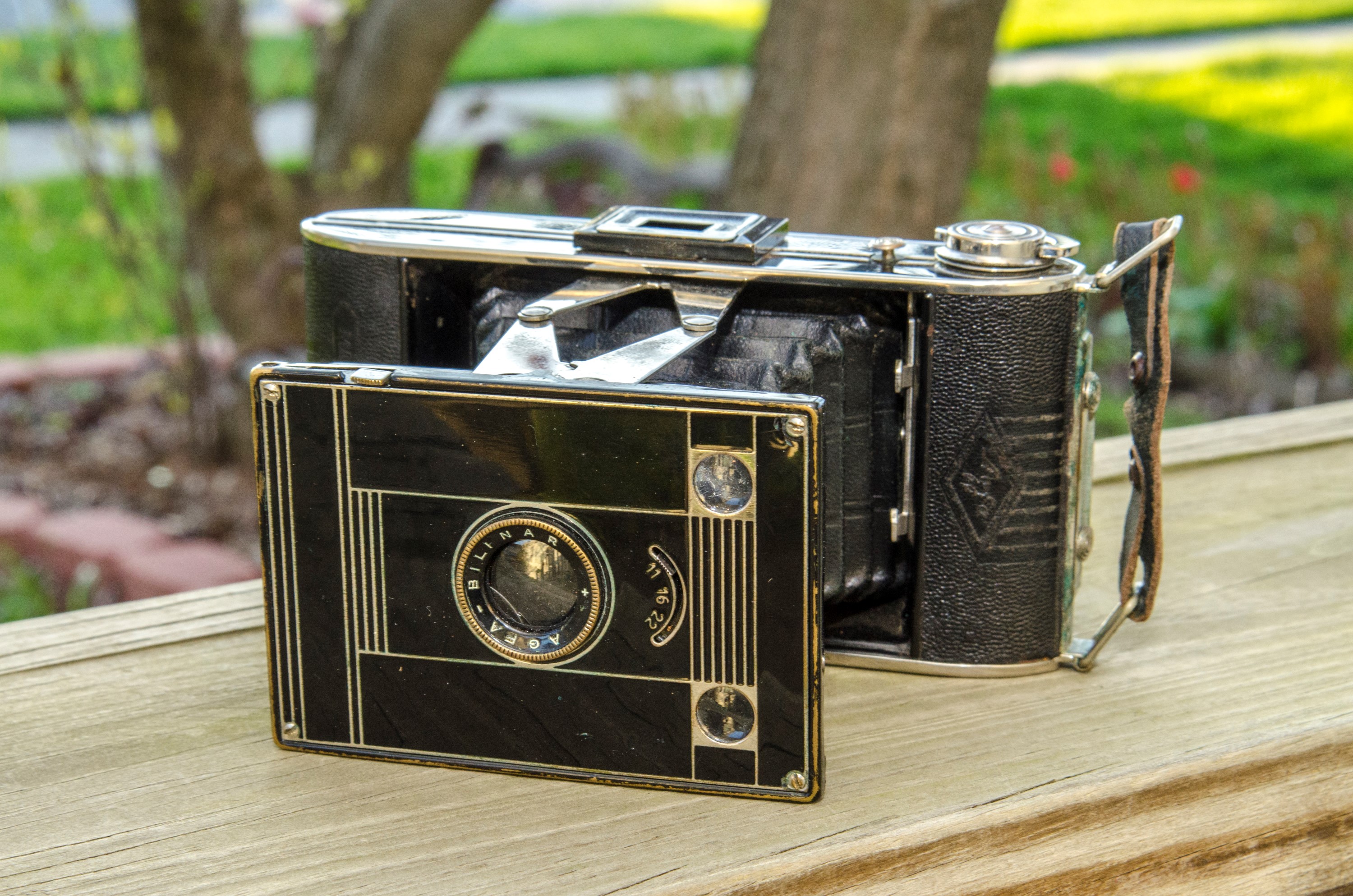
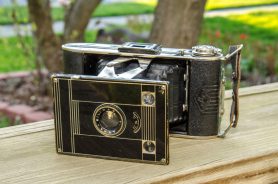
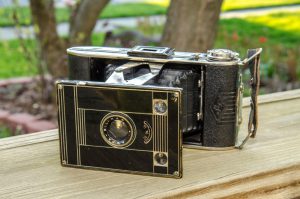





Fascinating history lesson and I am really surprised of the pictures. I have only run B/W in mine (https://jabcam.wordpress.com/?s=billy) and found it way to easy to get camera shake. But these shots look fantastic!
For the interior shot of the church, the camera was stabilized on a table, and for the rest, I used it like a waist level camera and held it to my chest to keep it as still as possible. What I think really helped was using the expired Portra 800. While it was an 800 speed film, I think it exposed more closely like a 200 speed film. I also kept the aperture at f/22 for all of the outdoor photos to compensate as much as possible for the fast film.
f22 fixes a lot of issues! Good photos.